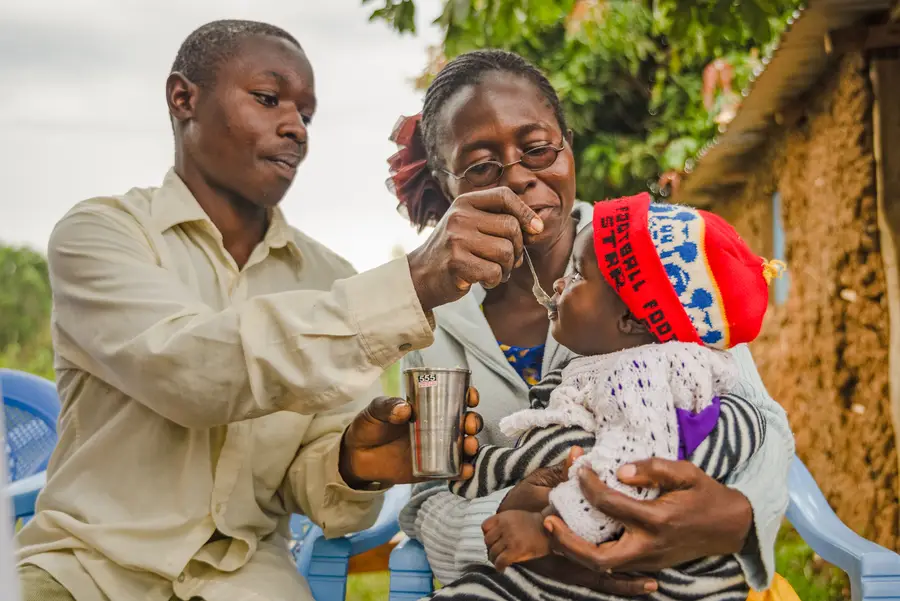Insights
Strengthening Food Systems for Nutrition Security

Photo by Katie G. Nelson for RTI International
Nutrition is a multifaceted issue with no quick fixes. That shouldn’t mean we shy away from figuring out how to address it, especially when malnutrition is the underlying cause of 45 percent of deaths of young children and 20 percent of maternal deaths.
New research from RTI sheds light on some of the complex dynamics around nutrition and new tools that could help address them.
Reorienting food systems for nutrition security
Many countries have developed their food systems to address food security – in other words, energy needs – which often doesn’t account for the needs of the most vulnerable, especially young children who require nutrient-dense foods for proper physical and cognitive development. Targeted and integrated interventions are needed to improve the nutrition of pregnant and breastfeeding women and their young children to prevent malnutrition.
Although there is a lot of research on what works for improving nutrition, implementing these evidence-based nutrition activities has been a challenge. Barriers to successful implementation include poverty, siloed sectors, weak infrastructure in both health and agricultural market systems, and the fact that what works well usually takes time, like broad economic development and social and behavior change.
Using RTI’s food environment toolkit to improve food systems
Given there is no one-size-fits-all solution, RTI has developed a food environment toolkit* to help reorient food systems – especially food markets and market actors – toward nutrition as part of an integrated approach for women and children’s well-being.
The toolkit helps connect customer needs and concerns with market actors that can fill them. We’ve used the toolkit to look systematically at nutrition gaps and then ask key consumers, such as mothers of young children, about foods that might help fill these gaps and what hinders them from purchasing more of these foods. We then took those findings to market actors and asked them about the constraints they face in making these foods more accessible, available, convenient, and desirable.
The end result is an understanding of leverage points within a food system where local stakeholders (sometimes supported by Feed the Future programming) could address those limiting factors. We piloted this toolkit with colleagues in Malawi and are now using it to inform USAID agriculture and food security programming implemented by RTI in Ethiopia and Liberia to boost the supply and consumption of nutritious foods. You can check out this blog post to learn more about the toolkit’s approach and what we learned from the Malawi pilot.
Identifying pathways to nutrition security
Resilience and income-generation are also important pieces of the malnutrition puzzle. Poverty is a chronic stressor and major contributor to poor nutrition, and alleviating it can help prevent families and young children from falling into malnutrition.
Research conducted through a USAID-funded project in Kenya is shedding new light on these issues, providing insights that can inform more robust solutions. We recently studied a novel approach to improving nutrition that layered nutrition training and behavior change communication onto work with market actors to promote the production and sale of nutritious foods. The study identified the most impactful pathways for improving nutrition, which included increasing the agricultural productivity of nutritious foods and women’s economic empowerment. We also found that increasing income from agriculture, when paired with nutrition training, gave people the knowledge and means to improve their nutrition.
We are delving deeper into evidence on what works to sustainably improve nutrition through two new food security projects that integrate nutrition and resilience. In Liberia, we are embarking on a USAID-funded project that will improve the production of nutritious foods and help local communities use climate-smart approaches to sustain gains. We plan to use RTI’s micro-, small-, and medium-sized enterprises (MSME) resilience framework to assess the resilience of MSMEs that provide agricultural inputs in rural areas, like seeds for nutritious crops. We’ll then use that information to strengthen their resilience capacities so that these local businesses can consistently provide smallholder farmers with climate-smart inputs, thus enabling a steady supply of nutritious foods for local families, even during shocks.
In Ethiopia, we are working with the private sector through a USAID-funded project to reorient food systems and make nutritious foods more affordable and available in local markets, especially to women who tend to make the food choices for their families. We used the food environment toolkit to select preferred nutritious foods, identify women’s constraints and motivations to purchasing more of these foods, and then shared those inputs with market actors. Through facilitated discussions, we are now supporting market actors to adapt their business models to expand into these neglected markets.
Sharing evidence for integrating nutrition into development projects
USAID’s new Global Malnutrition Prevention and Treatment Act of 2021 Implementation Plan challenges us to think even more holistically and intentionally about how we can integrate nutrition into a variety of development projects to help children thrive. Our new Center for Thriving Children is bringing together sectors at RTI to explore just how to do this and to test new ideas through programs like the USAID Cambodia Integrated Early Childhood Development Activity.
Unpacking the complexity of nutrition approaches and studying integrated interventions can help us further understand what works and what doesn’t. It’s important that we continue to research new ideas and approaches to ensure development projects deliver their intended nutrition results and can adapt when needed to further help children thrive.
* The food environment toolkit, internally funded by RTI, was developed by Valerie Flax and Tracy Mitchell in 2022. First used in Malawi, the toolkit is now supporting USAID-funded programs in Ethiopia and Liberia.
Disclaimer: This piece was written by Judy Odongo (Deputy Chief of Party), Chessa Lutter (Senior Fellow, Food Security & Agriculture), and Elizabeth (Betsy) Jordan-Bell (Senior International Nutrition Specialist) to share perspectives on a topic of interest. Expression of opinions within are those of the author or authors.



